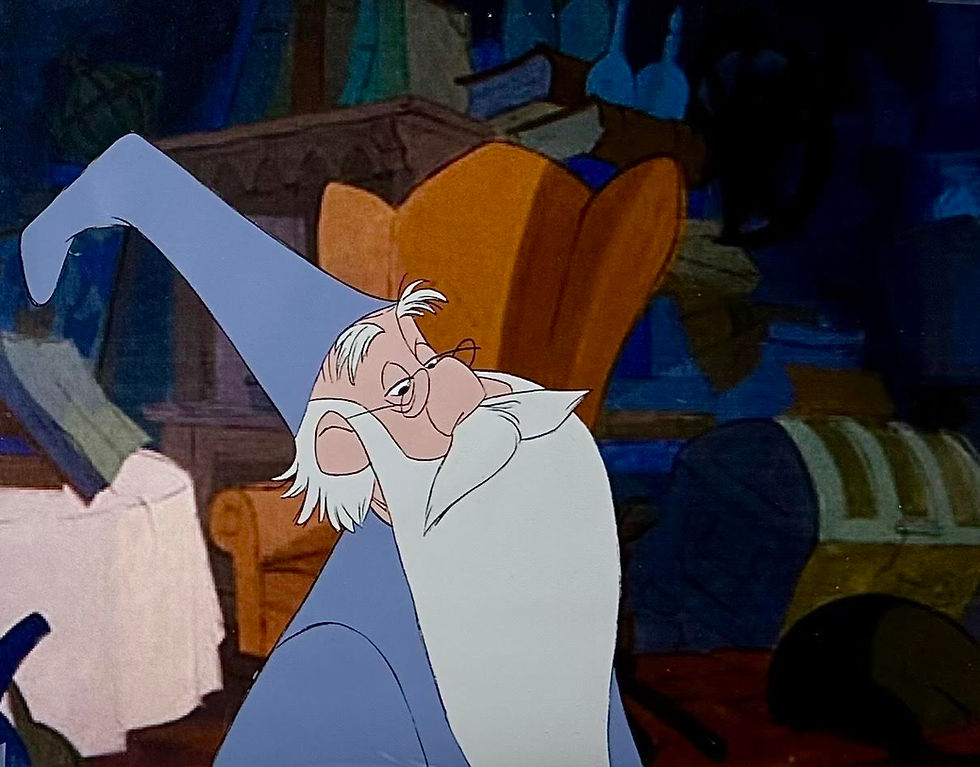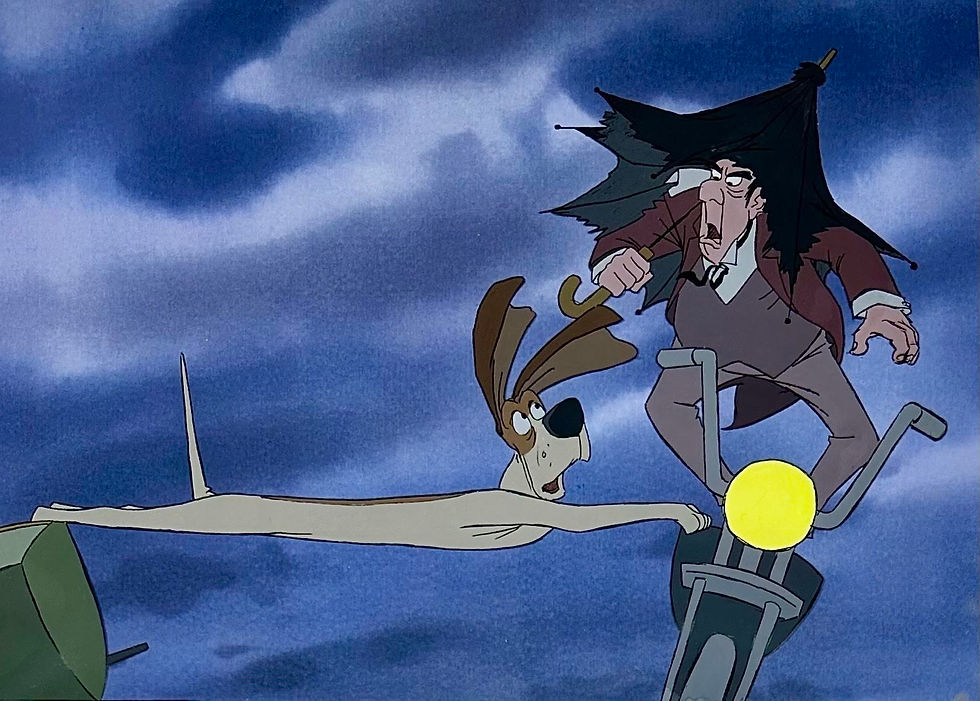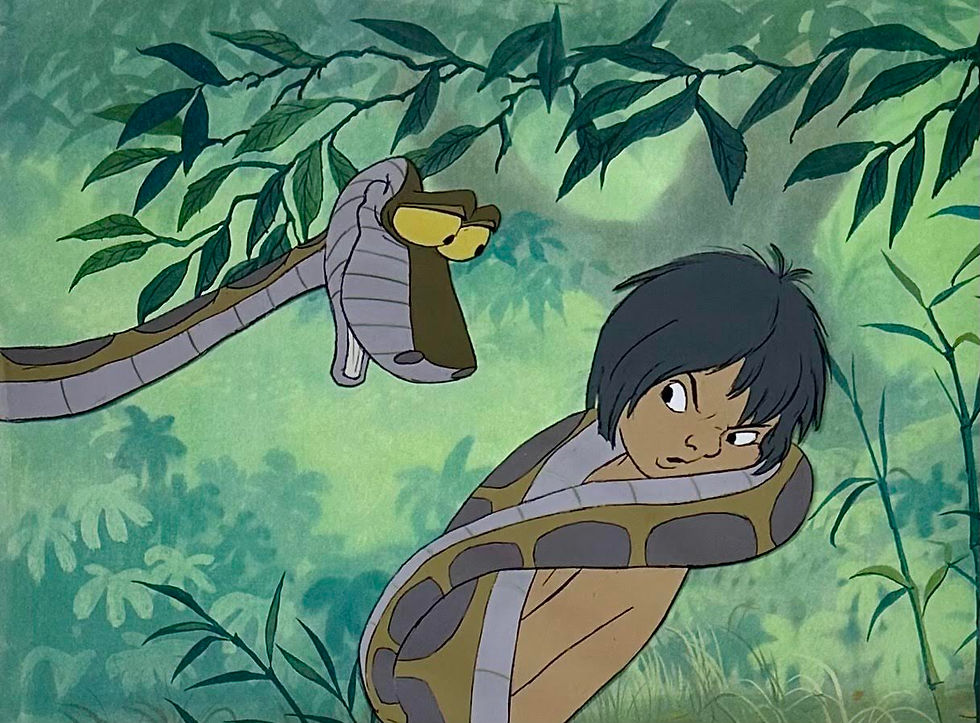Original Production Animation Drawing of Baloo The Bear and Mowgli from "The Jungle Book," 1967
- Untitled Art Gallery

- Nov 5, 2022
- 4 min read

Original production animation drawing of Baloo The Bear and Mowgli in graphite pencil from "The Jungle Book," 1967, Walt Disney Studios; Numbered 8 in pencil lower right; Size - Baloo The Bear & Mowgli: 7 x 4 1/4", Sheet 12 x 15 1/2"; Unframed.
"Look for the, bare necessities.
The simple bare necessities.
Forget about your worries and your strife."
- Baloo The Bear
"The Jungle Book," 1967 was the nineteenth animated feature film produced by Walt Disney Productions and inspired by Rudyard Kipling's book of the same name. The film was directed by Wolfgang Reitherman, it was to be the last film that was worked on by Walt Disney, as he passed away during its production. The film follows Mowgli, a feral child raised in the Indian jungle by wolves, as he encounters Bagheera the panther and Baloo the bear; who try and convince him to leave the jungle before the villainous tiger Shere Khan finds him. Voice actors include: Phil Harris, Sebastian Cabot, George Sanders and Louis Prima; as well as Disney regulars such as Sterling Holloway, J. Pat O'Malley, Verna Felton, and the director's son, Bruce Reitherman, as the voice of Mowgli.
One of Reitherman's productions, the 1968 short "Winnie the Pooh and the Blustery Day," won the Academy Award for Best Animated Short Film. In addition, all three of Reitherman's sons — Bruce, Richard, and Robert provided voices for Disney characters, including Mowgli in "The Jungle Book," Christopher Robin in "Winnie the Pooh and the Honey Tree," and Wart in "The Sword in the Stone." Not only did Bruce Reitherman provided the voice of Mowgli in "The Jungle Book," but he also acted out certain scenes as live action reference for the animators. The character of Mowgli was animated by quite a few animators, however Milt Kahl set the final design and the majority of Mowgli's scenes were animated by Frank Thomas and Ollie Johnston.
"The Jungle Book" was released on October 18, 1967, with noted acclaim for its soundtrack that featured eight original songs: seven by the Sherman Brothers and one by Terry Gilkyson. Longtime Disney collaborator Gilkyson was the first songwriter to complete several songs which followed Kipling's book closely; however Walt Disney felt that the works were too dark. The only piece of Gilkyson's work which survived to the final film, was his very upbeat song "The Bare Necessities." The Sherman Brothers were then brought in to do a complete rewrite. Disney frequently brought the composers to the storyline sessions, and asked them to "find scary places and write fun songs" that fit into the story and advanced the plot. The popular success of the film in undoubtedly due to both the music and songs, that were primarily written by the Sherman Brothers.
Baloo, which means "bear" in Hindi, is one of the most beloved characters in the Disney pantheon. He is an obese blue-gray sloth bear, with large white claws. Aside from King Louie, Baloo is the only animal character to walk on two legs in the film. He also resembles Little John from Disney's "Robin Hood," who were both voiced by Phil Harris. Harris also provided the voice of Thomas O'Malley from Disney's "The Aristocats." Baloo and Little John perform the same dance moves with King Louie in "The Jungle Book" and with Lady Kluck in "Robin Hood." A little know fact is that Walt Disney was used as a reference for the animators for the dance moves seen when Baloo is first introduced in "The Jungle Book."
Baloo was animated by Frank Thomas and Ollie Johnston. Ollie Johnston animated the first introduction of Baloo but Frank Thomas soon took over the character and, unlike so many other animators; was known for doing most, if not all of the rough drawings for his entire scene.
The Disney animator Andreas Deja wrote the following:
"This is actually not that unusual, since Frank usually contributed most or all of the drawings for any of his scenes. Other animators would often use a moving hold for calm moments, which involved only two key drawings with lots of in-betweens provided by the assistant. But Frank seems to always have something going on, even in the most subtle acting patterns. Something is always moving, things don’t come to a stop. As a result of producing so many drawings for a given scene, Frank could not focus on gorgeously designed poses or expressions. So his drawings by themselves might not look too intimidating to an animation student or professional, but watching them in motion is a whole other potato. The characters come to life in such a believable way, they breath, they move with weight, and they have real thoughts. In other words, they have a soul."
This is a wonderful full figure, eyes and mouth open, and smiling image of Baloo The Bear holding Mowgli. The drawing is from the scene when Baloo and Bagheea rescue Mowgli from King Louie and his monkey minions. When a stone pillar is knocked out of the temple complex, it begins to crumble, and King Louie rushes to prop it up. At the very last moment, Baloo manages to grab a very surprised Mowgli. John Lounsbery, one of Walt Disney's master animators and one of the famous Nine Old Men, surpervised the animation of this scene. Drawings from the King Louie ruins scene are very rare and this is an extremely scarce clean-up drawing; making it even rarer to appear in the open market, much less offered for sale. The drawing is an impressive seven inches tall, and would be a fantastic and important addition to any animation art collection!
#TheJungleBook #JungleBook #Baloo #KingLouie #FrankThomas #OllieJohnston #animation #cel #animationcel #productioncel #Disney #WaltDisney #untitledartgallery #animationart #productioncel #productiondrawing #BalooTheBear #ShereKhan #Kaa #Bagheera #WolfgangReitherman #PhilHarris #SebastianCabot #GeorgeSanders #LouisPrima #SterlingHolloway #JPatOMalley #VernaFelton #BruceReitherman #Mowgli #animationdrawing #ShermanBrothers #TerryGilkyson #TheBareNecessities #BareNecessities






